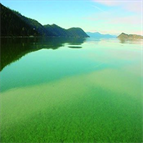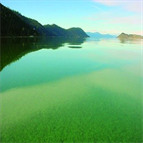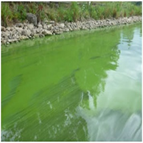Find methods for your needs
Refine by Feature
Displaying 1-5 of 5 results for Tag: Toxin
A Rapid and Specific Method for the Detection of Spiked Toxins Into the Food Supply
Instrument Type: LCMSMSDeveloping a fast and accurate screening method for detecting a wide range of toxic compounds is an important task for food safety. HR/AM spectrometry overcomes the screening limitation via selected reaction monitoring (SRM) on triple stage quadrupoles, because specific compounds need not be selected before analysis. Highly confident ID is achieved by accurate mass measurement of both precursor and fragment ions. A novel UHPLC-MS/MS method employing the Q Exactive benchtop Orbitrap mass spectrometer is proposed here for the study of possible spiked toxic agents into apple juice.
Identification and Quantitation of Microcystins by Targeted Full-Scan LC-MS/MS
Instrument Type: LCMSMSCyanobacteria, commonly referred to as blue-green algae, are photosynthetic prokaryotes that occur naturally in surface waters. They contribute significantly to primary production and nutrient cycling. Blooms of toxic cyanobacteria species in surface drinking water sources and recreational waters threaten human health. Gastrointestinal illness, skin irritation, and death following renal dialysis have been attributed to acute cyanotoxin exposure. We describe a simple and sensitive LC-MS method for definitive identification and quantitation of microcystins in water.
Analysis of Microcystins from Blue-green Algae Using the TSQ Quantum Ultra LC-MS/MS System
Instrument Type: LCMSMSOvergrowth of algae is a common problem in many wetlands with advanced stages of eutrophication (the enrichment of chemical nutrients containing nitrogen or phosphorus in an ecosystem). This often results in a thick, colored layer on the water's surface, known as an algal bloom. Some of the algae that grow in these bodies of water, known as Cyanobacteria or blue-green algae, produce toxic compounds known as microcystins. We describe a method for rapid analysis of three microcystins detected in the wetlands of Japan (Microcystin-LR, YR and RR).
Fast and Accurate Determination of Algal Toxins in Water Using Online Preconcentration and UHPLC-Orbitrap Mass Spectrometry
Instrument Type: LCMSMSWhen the density of the colonies of Microcystis and Nodularia cyanobacteria surpass a certain level, they produce hepatotoxic substances called microcystins and nodularins, respectively,2 while Anabaena and Apha-zinomenon are known to produce a neurotoxin called anatoxin. We describe a column-switching technique based on online preconcentration and high-resolution, full-scan Thermo Scientific™ Orbitrap™ mass spectrometry to obtain fast and accurate results for the determination of algal toxins in drinking water.
Rapid separation of microcystins using a Thermo Scientific Acclaim RSLC C18 column
Instrument Type: UHPLCThe Thermo Scientific UlitiMate 3000 system is applied for the rapid analysis of microcystins. The separation of three variants of microcystins was performed using the Thermo Scientific Acclaim RSLC C18 2.2 µm with UV detection at 238 nm.





